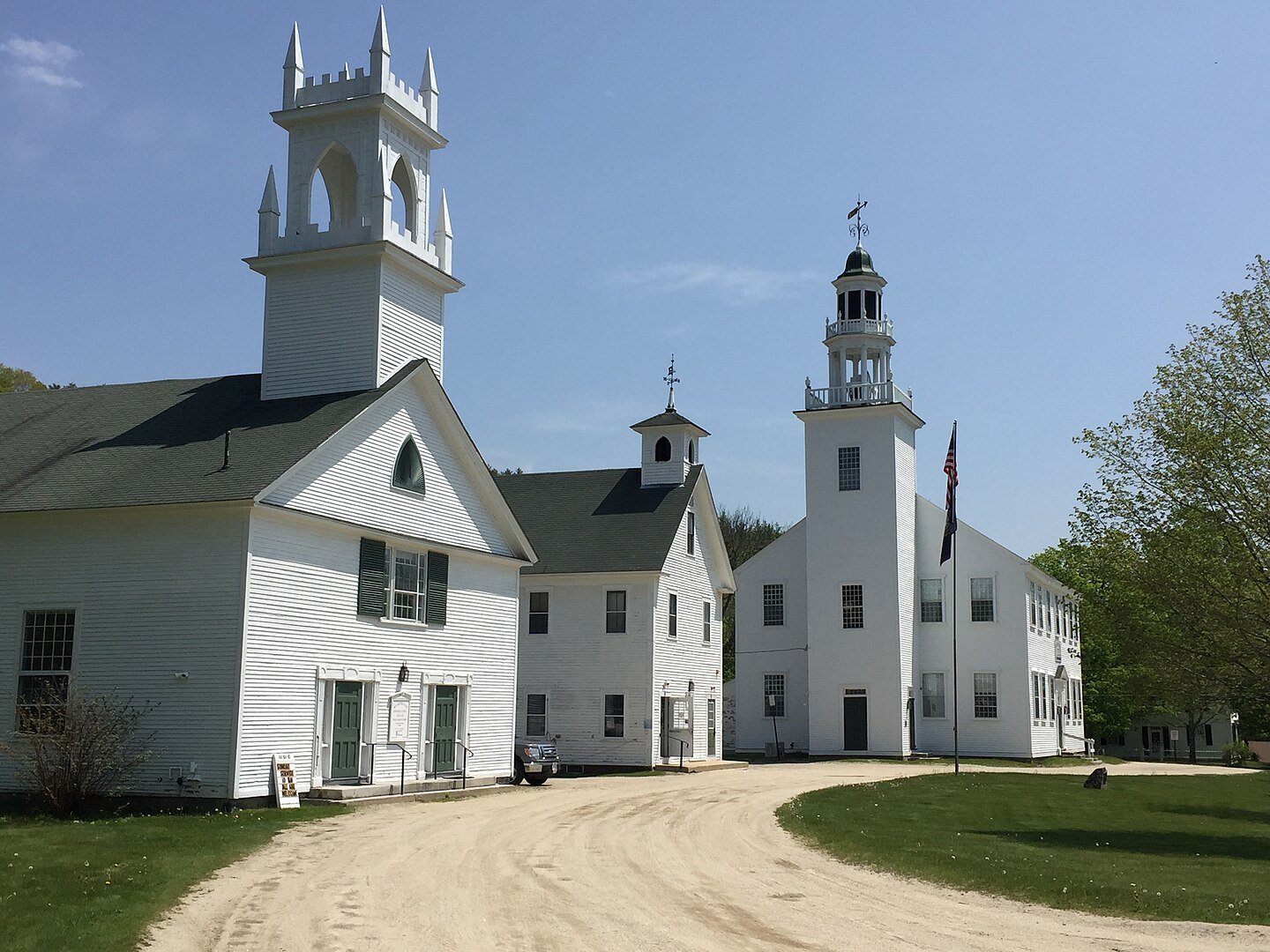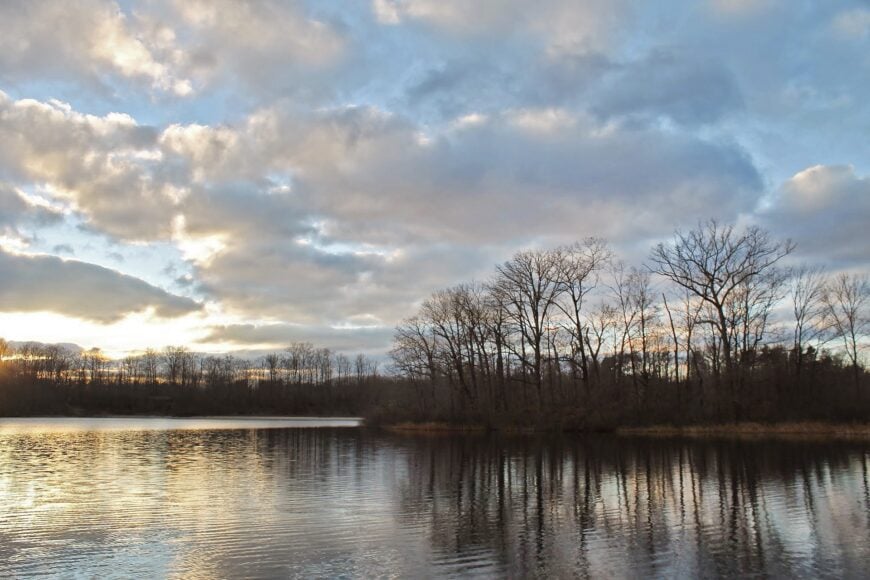
Northern Ohio wears its quiet like a badge, stretching from the edges of Lake Erie’s wind-creased water to the farmlands that shimmer in late-summer heat. Out here, the horizon is stitched with barns, woodlots, and church steeples that seem to lean into the sky. Geneva-on-the-Lake greets you with clapboard cottages and a state park whose trails bend toward the lake, while Burton glows with maple sugaring traditions that linger like a sweet thread through every season.
23. Wakeman Township: Quiet Farmland in Huron County
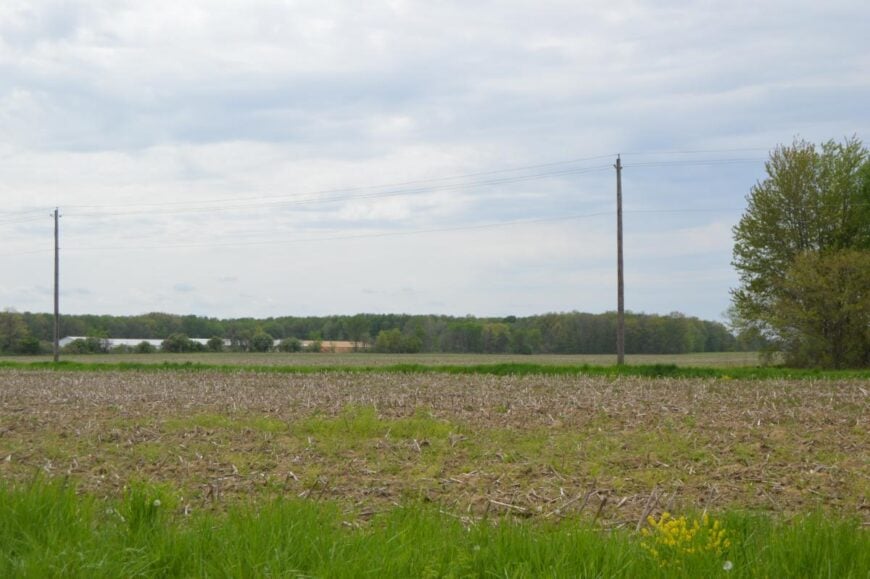
Why It’s Considered Secluded?
1. Sparse Population & Rural Setting
- The township’s population is quite low—around 2,761 as of the 2020 census, over an area of about 66 square kilometers. That translates to roughly 108 people per square mile.
- It offers a “suburban–rural mix feel”, with most residents owning their homes and enjoying large property lots, reinforcing a quiet, small-town vibe.
2. Geographic Location & Limited Access
- There are no major highways running through the township. The main road, Ohio State Route 303, begins in Wakeman and is largely a rural two-lane highway that traverses farmland and woodlands.
- There’s no proximity to urban centers—surrounding areas are similarly rural or agricultural, so the region feels remote.
3. Agricultural & Natural Landscape
- Much of the land is used for agriculture, and the surface is described as rolling terrain with sandy and loamy soils, typical of countryside landscapes.
- The setting fosters a quiet, scenic environment far from the hustle and bustle of city life.
4. Small, Stable Community
- The village of Wakeman, situated within the township, is tiny—about 990 residents as of 2020—and is nestled along the Vermilion River, further emphasizing the peaceful and isolated environment.
- Demographics show a tight-knit, largely homogenous population with high homeownership and little turnover.
What’s Special About Wakeman Township
Wakeman Township stands out for its scenic Vermilion River running through the heart of the village, giving it a peaceful, natural charm. Its landscape mixes rolling farmland and woodlands, creating a classic rural Ohio setting. The small population and high homeownership foster a stable, close-knit community where neighbors know one another. Despite its seclusion, it carries a historic small-town character, with quiet streets, old homes, and a pace of life that feels unchanged for generations.
Where is Wakeman Township?

Wakeman Township sits in north-central Ohio’s Huron County, about 15 miles southeast of Sandusky and roughly 10 miles off U.S. Route 20. Visitors leave main highways for two-lane country roads that roll past barns, soy fields, and clusters of hardwood forest.
With the Vermilion River winding nearby and only small villages for neighbors, its landscape feels quietly rooted in rural calm. It’s close enough for an easy drive — yet peaceful enough to feel like you’ve stepped into Ohio’s slower heartbeat.
22. Clarksfield Township: Hidden Haven of Huron County

Why Clarksfield Township Feels Secluded
- Very Low Population Density
With just about 1,500 residents spread over more than 26 square miles, the township has only around 59 people per square mile—making it distinctly quiet and rural. - Absence of Municipal Centers
There are no incorporated towns within its boundaries. The only named spot is the tiny unincorporated community of Clarksfield, so the area feels more like scattered homesteads than a town. - Predominantly Agrarian and Natural Landscape
The land is mostly farms, fields, and woodlands on Huron County’s eastern edge, giving it an agricultural identity and a countryside setting far removed from city life.
What’s Special About Clarksfield Township
- Revolutionary War Heritage
It’s named for James Clark, a Revolutionary War hero and “Fire Sufferer” who was granted land here as compensation for his wartime losses. - Deep Pioneer Roots
Settled in the early 1800s, the township saw some of the county’s first schools, churches, and mills established along the Vermilion River. - Authentic Rural Homesteading
Most residents own their homes on large lots, enjoying a tranquil pace of life shaped by farming traditions and small-community ties.
Where is Clarksfield Township?
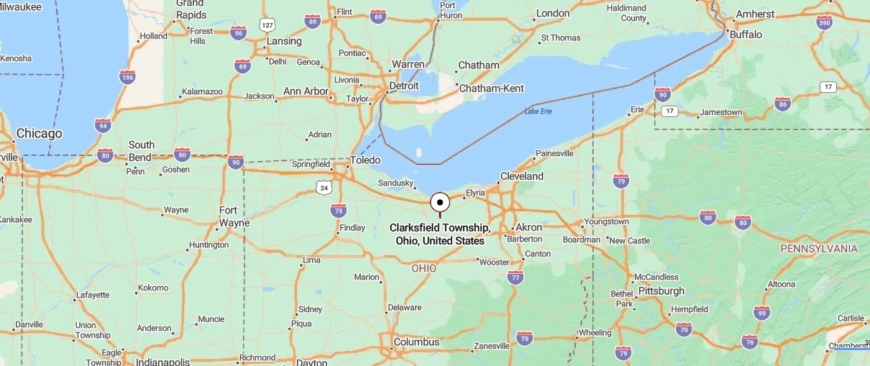
Clarksfield Township sits in north-central Ohio’s Huron County, about 15 miles east of Norwalk and roughly 8 miles south of U.S. Route 20. Getting there involves turning off larger roads onto narrow country lanes that drift past grain silos, farmhouses, and stretches of open cropland.
With the Vermilion River nearby and only a few small hamlets in sight, its setting feels quietly grounded in rural life. It’s close enough to reach without planning — yet peaceful enough to feel like you’ve stepped into a gentler rhythm.
21. Richmond Township: Quiet Woodlands of Ashtabula County
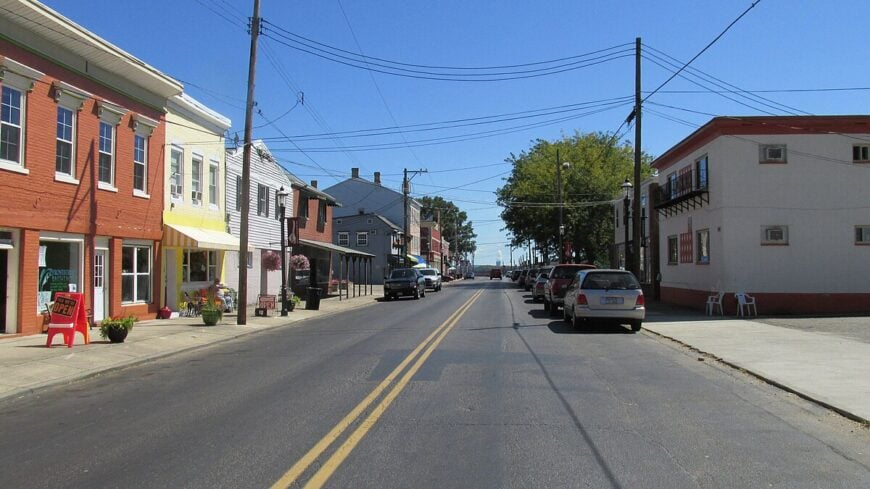
Why Richmond Township Feels Secluded
- Very Low Population Density
With fewer than 1,000 residents spread across more than 25 square miles, Richmond Township has only about 38 people per square mile, giving it a distinctly quiet, rural character. - No Urban Centers
There are no incorporated towns or villages within the township. Life is scattered across farmland, homesteads, and open countryside, not concentrated in any dense settlement. - Rural, Agricultural Terrain
Located on Huron County’s southwestern edge, the land is dominated by fields, pastures, and rolling countryside, reinforcing its sense of being far removed from busy urban areas.
What’s Special About Richmond Township
- Frontier Heritage
Organized in 1836, it grew from pioneer roots, with early settlers building post offices, sawmills, schools, and churches that defined the community’s rural life. - Historic Roads
Tiffin Road, opened between 1836 and 1840, became a vital early travel route, showing how the township played a role in Ohio’s frontier development. - Unique Identity
Richmond Township carries a distinctive name and character, shaped by its early 19th-century foundations and preserved through its agricultural, small-community lifestyle.
Where is Richmond Township?

Richmond Township rests in northeastern Ohio’s Ashtabula County, about 15 miles south of Ashtabula and roughly 10 miles off Interstate 90. Travelers leave the highway for winding country roads that stretch past orchards, woodlots, and long-settled farms.
Nestled near the Grand River with only a few neighboring hamlets, the township feels quietly parked in its own rural corner. It’s close enough for a day’s drive — yet remote enough to feel like you’ve slipped into Ohio’s timeless countryside.
19. Henrietta Township: Fields and Silence in Lorain County

Why Henrietta Township Feels Secluded
- Low Population Density
About 1,779 residents live across 21 square miles, which works out to only around 82 people per square mile. That’s spread-out living by any standard. - No Incorporated Communities
There are no towns or villages inside the township—just rural homesteads and farmland. - Agricultural Setting
The land is mostly farms and open countryside, with little in the way of dense development.
What’s Special About Henrietta Township?
- One of a Kind
It’s the only Henrietta Township in Ohio, giving it a unique identity. - Stable and Affluent
The estimated 2025 population is around 1,820. The median household income is about $90,000, with a median home value close to $291,000. Very few residents move each year—only about 1%—making it unusually stable compared to most Ohio communities. - Older Demographics
The median age is in the low 50s, showing a higher-than-average retiree population. - Community Character
Nearly all residents own their homes. The township combines prosperity with rural quiet, making it attractive for those seeking space and stability.
Where is Henrietta Township?

Henrietta Township lies in northern Ohio’s Lorain County, about 12 miles south of Lake Erie and roughly 8 miles west of Oberlin along State Route 113. The route meanders past grain fields, historic barns, and clusters of maple and oak as it slips farther from highway traffic.
With only scattered farmsteads and quiet crossroads nearby, the township feels gently anchored in agricultural calm. It’s close enough for a leisurely country drive — yet tranquil enough to feel like you’ve found a quieter pocket of Ohio.
18. Florence Township: Tucked Away in Erie County

Why Florence Township Feels Secluded
- Low Population Density
As of the 2020 census, the population was about 2,470, spread across around 26 square miles, which comes out to roughly 94 people per square mile. That gives it a distinctly open, rural vibe. More recent estimates, including one from 2025, suggest a slight decline, to around 2,323 people, with a population density of approximately 89 people per square mile. - Few Town Centers
There are no incorporated cities or villages within its borders. The only named locale is the small, unincorporated community of Birmingham—so most of the area remains agricultural and sparsely settled. - Mostly Rural and Natural Landscape
The land is predominantly farmland, open fields, and natural areas—reinforced by its proximity to agricultural townships and a lack of urban infrastructure. The quiet is only broken occasionally by the nearby Ohio Turnpike.
What’s Special About Florence Township
- Early Foundation and Unique Name Origin
It was judicially organized in 1817 and was originally named “Jesup” Township, after an early landholder. That name was soon replaced with “Florence” when the original honoree fell out of favor with early settlers. - Retiree-Friendly, Rural Living
Many residents are homeowners and retirees who appreciate the peace and space. The community features a strong rural character with a stable housing market and long-term residents. - Relatively Affluent and Family-Focused
Visual benchmarks:- Median household income is around $108,000, which is well above county and state averages.
- Median home value sits at roughly $256,800.
- Educational attainment: nearly 91% have at least a high school diploma, and about 14% hold a bachelor’s degree or higher.
- Resident turnover is low—about 5% moved in the past year, compared to around 10–12% in broader metrics, underscoring community stability.
- Older Demographics
The median age is around 53 years, which is noticeably higher than county and state averages. This suggests a significant retiree presence and a mature community dynamic. - Strong Local Engagement
The township hosts one of the bigger Memorial Day parades in the region and maintains active township governance and services—another sign of tight-knit, homegrown community spirit.
Where is Florence Township?

Florence Township lies in southern Erie County in northern Ohio, about 15 miles southeast of Sandusky and near the junction of State Routes 113 and 60. Rather than winding back roads, visitors often follow a straight stretch of rural highway that slices through flat farm country toward its center.
Surrounded by expansive fields, modest crossroads, and stretches of creek-cut woodland, it carries a wide-open feel that contrasts the bustle just north by the lake. It’s not hard to reach — yet it still feels like a place where the horizon belongs to you alone.
17. New Lyme Township: Woodland Refuge in Ashtabula County
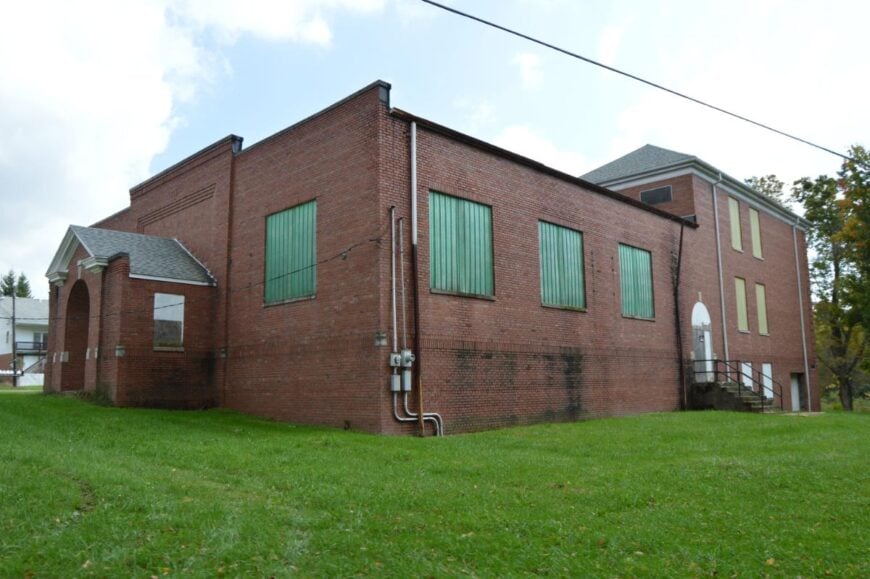
Why New Lyme Township Feels Secluded
- Very Small Population
With only about 1,000 residents across nearly 25 square miles, New Lyme Township has a population density of just over 40 people per square mile—one of the lowest in the region. - No Incorporated Villages
The township contains no incorporated towns, only the small unincorporated community of New Lyme, leaving the area dominated by open countryside and scattered farms. - Remote, Rural Character
The land is mostly farmland, woods, and quiet roads, with no major highways running through. This makes the township feel far from urban development or busy traffic corridors.
What’s Special About New Lyme Township
Close-Knit, Agrarian Community
The township has maintained its agricultural traditions and quiet, small-community feel for more than two centuries, making it a living example of Ohio’s early frontier settlement carried into the present.
Historic Roots
Established in the early 1800s, it was settled largely by pioneers from New England. The name “New Lyme” honors Lyme, Connecticut, reflecting that heritage.
Pioneer Legacy
Early settlers built churches, schools, and farms that anchored the community, many of which still shape its rural identity.
Where is New Lyme Township?

New Lyme Township rests in northeastern Ohio’s Ashtabula County, about 18 miles south of Geneva and roughly 12 miles off Interstate 90. You reach it via a series of rural county roads that ease through maple stands, Amish farmsteads, and gently rolling fields.
With the Pymatuning Creek nearby and only a scattering of crossroads communities in sight, the township feels quietly folded into the pastoral landscape. It’s close enough for a calm day’s drive — yet remote enough to feel like you’ve slipped into Ohio’s quieter, more graceful pace.
16. Geneva-on-the-Lake: Lakeside Quiet in Ashtabula County

Why does it feel secluded?
- Compact but Small
The village covers just over 2 square miles and has under 1,000 residents. That size makes it feel cozy, but not truly remote. - Resort Atmosphere, Not Isolation
Unlike farmland townships, it sits directly on Lake Erie and was built as a getaway destination. The shoreline and summer attractions give it a lively resort character.
What’s Special About Geneva-on-the-Lake
- Ohio’s First Summer Resort
Founded in 1869, it became known as the state’s very first summer resort and has drawn visitors for more than 150 years. - The Iconic “Strip”
A one-mile stretch lined with arcades, food stands, rides, and mini-golf creates a nostalgic boardwalk feel, still buzzing with seasonal visitors. - Events and Energy
The village hosts big summer gatherings like car and motorcycle rallies, while also serving as a gateway to Lake Erie recreation and nearby wineries. - Unique Vibe
Geneva-on-the-Lake combines small-village intimacy with a fun, festive lakefront atmosphere, making it feel both relaxed and lively at once.
Where is Geneva-On-The-Lake?
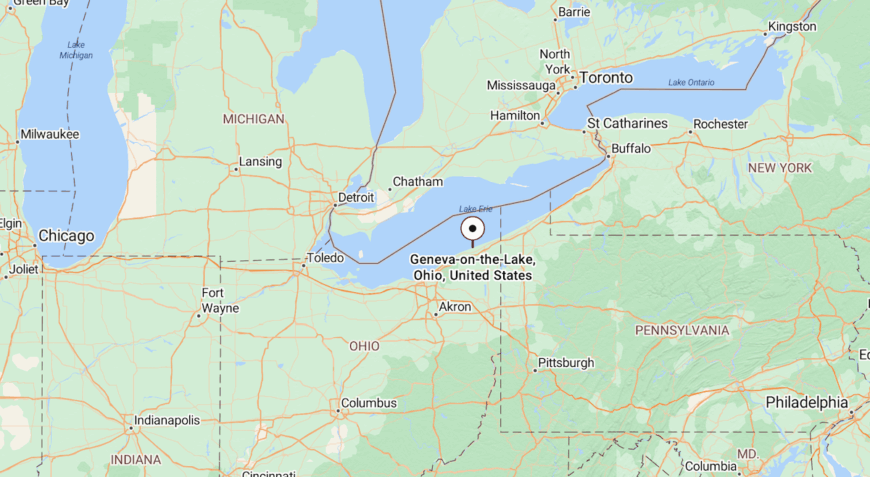
Geneva-on-the-Lake lies in northern Ashtabula County, about 50 miles east of Cleveland and 7 miles north of Interstate 90. The route in carries travelers past vineyards, farm rows, and gentle hills before dropping suddenly into open water views.
With Lake Erie stretched wide at its edge and only small rural towns nearby, the village feels distinctly tucked away. It’s close enough for a quick escape from the city, yet peaceful enough to feel like you’ve stepped into Ohio’s shoreline at its most timeless.
15. Orwell Township: Hidden Fields in Ashtabula County

Why Orwell Township Feels Secluded
- Low Population Density
Around 3,000 residents live across nearly 24 square miles, which works out to about 129 people per square mile—very sparse compared to urban areas. - Limited Development
Outside of the small village of Orwell, the township is mostly farmland, scattered homesteads, and natural landscape. - Geographic Quiet
Situated on the southwestern edge of Ashtabula County, it’s surrounded by fields, creeks, and woodlands, giving it an off-the-beaten-path feel.
What’s Special About Orwell Township
- Unique Identity
It’s the only Orwell Township in Ohio, with its name tracing back to Vermont, where some of the original settlers came from. - Early Settlement Roots
The township was first settled around 1815 and officially named Orwell in 1826, reflecting its deep pioneer heritage. - Balanced Demographics
The median age is about 40 years, with a mix of families and older residents. Median household income is roughly $46,000, with per-capita income near $29,000. While modest, it reflects a working-class rural character. - Heritage and Landscape
The area is shaped by its creeks, farmland, and strong pioneer traditions, giving it a small-community resilience that has endured for over 200 years.
Where is Orwell Township?

Orwell Township lies in northeastern Ohio’s Ashtabula County, about 15 miles south of Geneva and roughly 8 miles east of U.S. Route 45. The approach follows long straight roads that cut through flat cropland, passing whitewashed barns and fields dotted with hay bales.
With only a handful of crossroads communities nearby and the Grand River flowing quietly beyond view, the landscape feels settled, spacious, and far from rush or noise. It’s close enough for a short Sunday drive — yet remote enough to feel like you’ve landed somewhere life moves without hurry.
14. Troy Township: Rustic Life in Geauga County
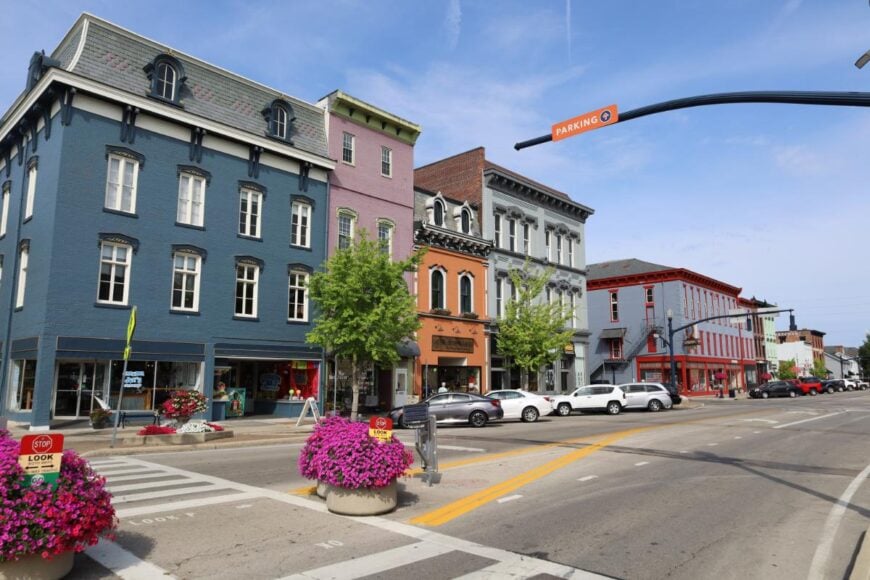
Why Troy Township Feels Secluded
- Low Population Density
With just under 3,000 residents spread over more than 25 square miles, Troy Township averages around 115 people per square mile—giving it a distinctly rural character. - Scattered Settlement
There are no large towns or cities within the township. Homes, farms, and small clusters of buildings are spread out, reinforcing its quiet atmosphere. - Agricultural and Wooded Landscape
The land is primarily farmland, pastures, and forested areas. The absence of dense development keeps the township peaceful and set apart from urban life.
What’s Special About Troy Township
- Historic Roots
Established in the early 19th century, Troy Township carries strong pioneer heritage, with early settlers shaping the area through farming, mills, and small community institutions. - Unique Identity
It’s one of the few Ohio townships named Troy, giving it historical ties to the more famous Troy in New York—where many of its first families originated. - Community Character
Residents are largely homeowners, many connected to agriculture, creating a stable, close-knit rural community. - Natural Setting
The township’s farms, streams, and wooded patches make it scenic and attractive to those seeking country living with a sense of history.
Where is Troy Township?

Troy Township sits in northeastern Ohio’s Geauga County, about 10 miles southeast of Chardon and roughly 15 miles from U.S. Route 422. To reach it, travelers follow quiet two-lane roads that pass maple-syrup farms, Amish homesteads, and clusters of old hardwood forest.
With only a few small crossroads and the Cuyahoga River headwaters nearby, the township feels firmly rooted in peaceful, working countryside. It’s close enough for a weekend drive — yet tranquil enough to feel like you’ve stepped into Ohio’s simpler, slower-breathing side.
13. Montville Township: Quiet Heart of Geauga County

Why Montville Township Feels Secluded
- Low to Moderate Population Density
With a population of around 2,000 residents spread across roughly 26 square miles, Montville Township averages fewer than 80 people per square mile—leaving plenty of open space. - Rural Settlement Pattern
There are no incorporated towns inside the township. Life centers on scattered homes, farms, and small crossroads communities rather than a dense urban hub. - Agricultural Landscape
The township is dominated by farmland, rolling fields, and patches of woodland. This keeps the area quiet and reinforces its separation from busier developed regions.
What’s Special About Montville Township
- Early Pioneer Heritage
Organized in the early 1800s, the township was settled by families from New England. Many of the first institutions—churches, schools, and small mills—were built by these early pioneers. - Unique Name and Identity
Montville Township carries a distinct New England–inspired name, reflecting the heritage of its first settlers. - Stable Rural Character
Most residents own their homes, turnover is low, and the community retains a close-knit, small-town atmosphere. - Natural Beauty
With its open farmland, wooded patches, and scenic rural views, Montville Township offers a quiet countryside lifestyle that feels far removed from urban bustle.
Where is Montville Township?

Montville Township is tucked into the northeastern corner of Ohio’s Geauga County, roughly 12 miles north of Middlefield and about 15 miles west of the Grand River Wildlife Area. Instead of a single main route, a patchwork of county roads leads in — some straight, others winding past Amish farms, maple groves, and stands of second-growth forest.
With few clusters of buildings and long views across open fields, it sits quietly beyond the pull of nearby towns. It’s not hard to get to — yet it still feels like someplace gently set apart from the rush of modern life.
12. Rome Township: Farmland Privacy in Ashtabula County

Why Rome Township Feels Secluded
- Sparse Population
With just over 1,800 residents spread across more than 25 square miles, Rome Township has fewer than 75 people per square mile, giving it a distinctly rural feel. - Lack of Urban Centers
There are no incorporated towns or cities within its borders. Life is built around farms, homes on large lots, and the small unincorporated community of Rome. - Countryside Landscape
The area is largely farmland, woods, and open countryside. With no major highways crossing through, it maintains a quiet and removed atmosphere.
What’s Special About Rome Township
Scenic and Agricultural Character
The mix of rolling farmland and wooded tracts gives Rome Township a timeless, peaceful charm that defines its identity.
Early Settlement Roots
Established in the early 1800s, it reflects classic Ohio pioneer history, with settlers building the first schools, churches, and mills that shaped local life.
New England Heritage
The township was named for Rome, New York, where many of the original settlers had come from, connecting it to broader migration patterns of the time.
Stable, Close-Knit Community
Most residents are homeowners, with deep family ties to the land and community.
Where is Rome Township?

Rome Township stretches across southeastern Ashtabula County in northeastern Ohio, roughly 20 miles south of Lake Erie’s shoreline and just east of State Route 45. Rather than winding lanes, the approach is a grid of long, ruler-straight rural roads running past Amish homesteads, hayfields, and white-clapboard farmhouses.
Sparsely settled and edged by the Grand River’s woodland floodplain, the landscape feels broad, quiet, and unhurried. It’s easily found on a map — yet still feels like a place where the horizon is wider and the pace of life gently drifts.
11. Vermilion Township: Coastal Calm in Erie County
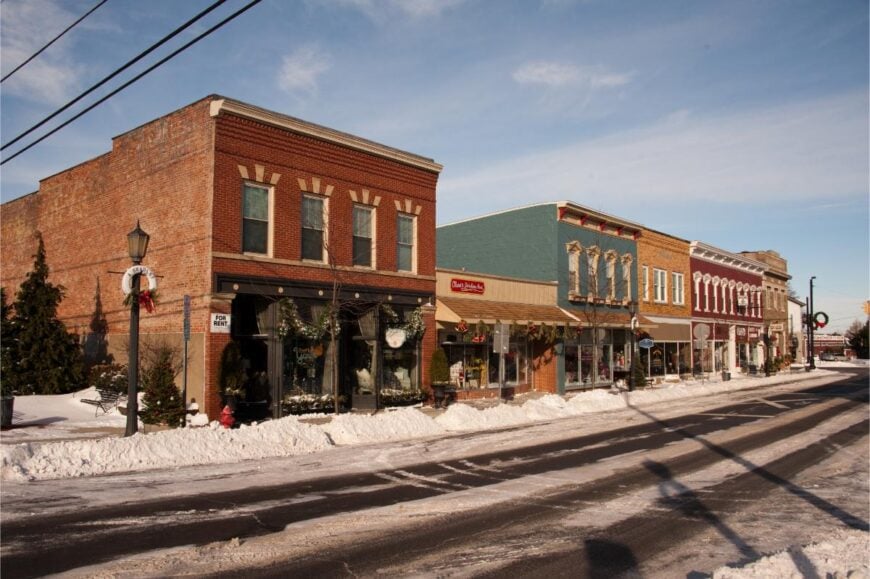
Why Vermilion Township Feels Secluded
- Low Population Density
With only a few thousand residents spread across more than 27 square miles, Vermilion Township averages under 100 people per square mile, which reinforces its open, rural character. - Absence of Major Urban Development
There are no incorporated towns or cities within the township itself. Most of the land is farmland, wooded areas, and scattered homes, rather than concentrated neighborhoods. - Natural Setting
The township’s landscape is shaped by fields, streams, and wooded patches. The lack of major highways or commercial hubs makes it feel tucked away from busy urban life.
What’s Special About Vermilion Township
- Historic Roots
Settled in the early 1800s, Vermilion Township developed around farming and milling, carrying strong pioneer traditions that still shape its culture today. - Unique Name and Heritage
It shares its name with the Vermilion River, which flows nearby and historically served as a natural resource for settlers. - Stable Rural Community
The majority of residents own their homes, with family farms and multi-generation households creating a strong sense of stability. - Scenic Character
With its wide farmland views, quiet country roads, and natural features, Vermilion Township embodies the calm and charm of rural Ohio living.
Where is Vermilion Township?

Vermilion Township occupies a sliver of northern Ohio in Erie County, positioned just south of Lake Erie and about five miles inland via State Route 60. Rather than threading through deep countryside, the drive north is marked by subtle shifts — from farmland to orchards to river-cut woodlands as you near the Vermilion River.
Though only minutes from the shoreline and nearby towns, the area keeps a hushed, tucked-back quality behind its barns, fields, and tree-lined bends. It’s not far on the map — yet it has that gently hidden feeling that makes you linger a little longer than planned.
10. Thompson Township: Undisturbed Woodland in Geauga County
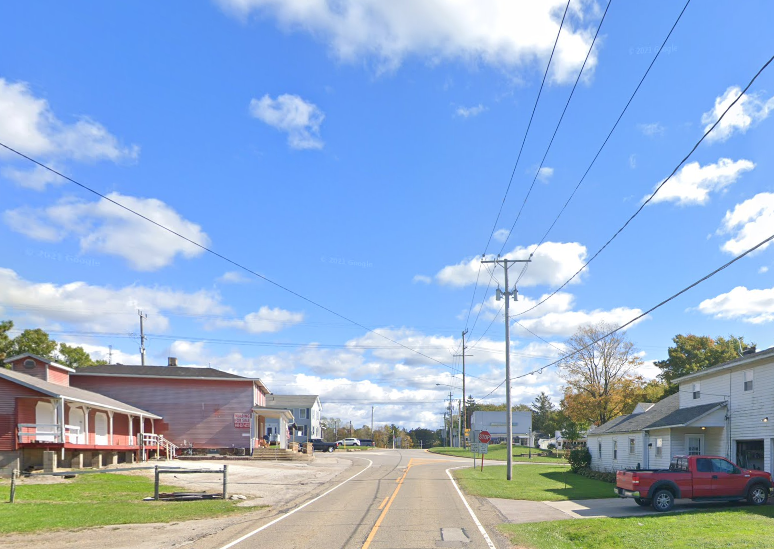
Why Thompson Township Feels Secluded
- Small Population Spread Out
With around 2,000 residents living across nearly 24 square miles, Thompson Township averages fewer than 85 people per square mile, giving it an open and rural feel. - No Large Towns Inside
There are no incorporated towns or villages within the township—only the small unincorporated community of Thompson—which keeps the area quiet and lightly developed. - Countryside Landscape
The township is largely farmland, open fields, and patches of forest. Limited roadways and the absence of major commercial areas enhance its sense of seclusion.
What’s Special About Thompson Township
- Early Settlement Heritage
Founded in the early 19th century, it was established by pioneers who built the first churches, schools, and farms that still shape the township’s rural identity. - Unique Community Name
Named after an early landholder, Thompson Township carries a distinctive identity that connects it to Ohio’s early frontier history. - Tight-Knit Rural Life
Most residents own their homes, and the area has strong community ties with a stable population. - Scenic and Agricultural Character
Its rolling farmland, woodlands, and quiet roads make it a classic example of peaceful Ohio countryside living.
Where is Thompson Township?
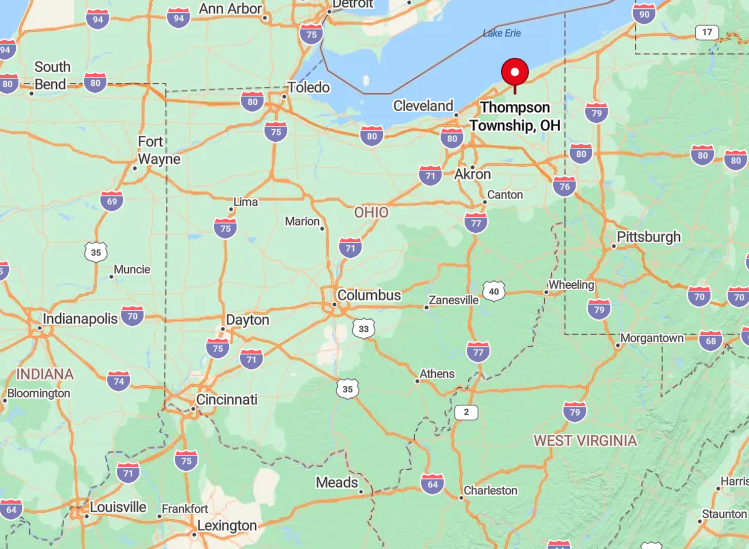
Nestled in the northeastern corner of Geauga County, Thompson Township is tucked away from the main thoroughfares, enhancing its sense of seclusion.
It’s situated along U.S. Route 528, but the surrounding dense forests and rolling hills make it feel worlds apart from urban centers. Getting there involves a scenic drive through picturesque countryside roads, which I find adds to the allure of the destination.
The township’s location away from major highways keeps it undisturbed by heavy traffic, making it a perfect spot for those seeking an escape.
9. Burton Township: Peaceful Living in Geauga County
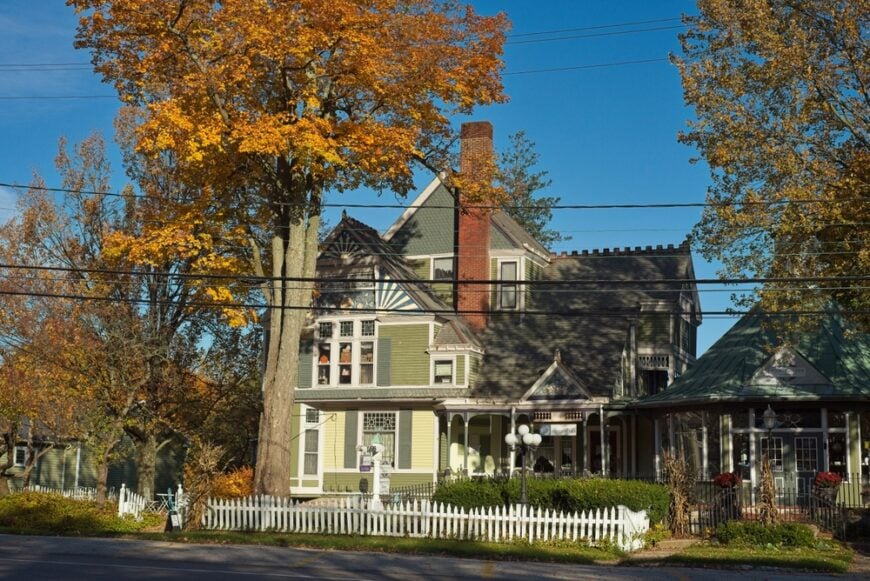
Why Burton Township Feels Secluded
- Low Population Density
With just over 4,600 residents spread across more than 23 square miles, Burton Township averages under 200 people per square mile, giving it a distinctly open, rural feel compared to nearby suburbs. - No Major Urban Centers
The only notable settlement is the small village of Burton. Beyond that, the township is farmland, woods, and scattered residences rather than concentrated neighborhoods. - Rural Landscape
Dominated by agriculture and open countryside, the area has quiet roads and few commercial hubs, keeping it removed from busier development.
What’s Special About Burton Township
- Historic Significance
Burton is one of the oldest settlements in Geauga County, established in 1806, and played a key role in the county’s pioneer history. - Cultural Heritage
The township is home to traditions tied to Ohio’s maple syrup industry, with Burton often called the “Maple Syrup Capital of Ohio.” - Community Stability
Most residents are homeowners with deep local roots, fostering a small-town atmosphere where family and community ties remain strong. - Scenic and Pastoral Character
Its farmland, historic architecture, and rolling countryside make Burton Township both picturesque and timeless, blending history with rural tranquility.
Where is Burton Township?
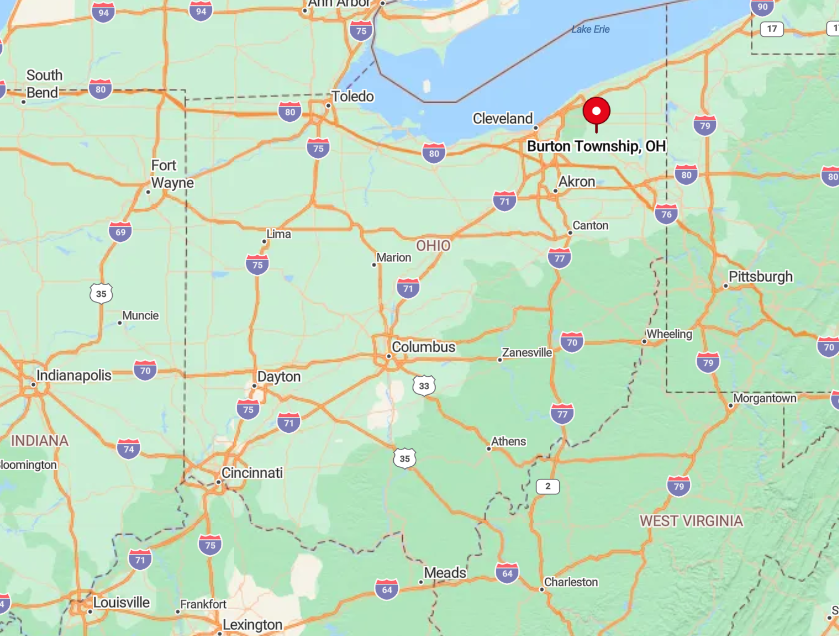
Located in the heart of Geauga County, Burton Township is easily accessible via State Route 700 but remains nestled away from major urban centers. The township’s position amidst vast rural areas enhances its secluded feel, with the surrounding farmland and forests creating a natural buffer from the outside world.
Driving through the scenic routes to get there, I always feel a sense of calm wash over me. The lack of nearby highways means that traffic is minimal, making Burton Township a tranquil retreat.
8. Middlefield Township: Amish Country’s Quiet Corner
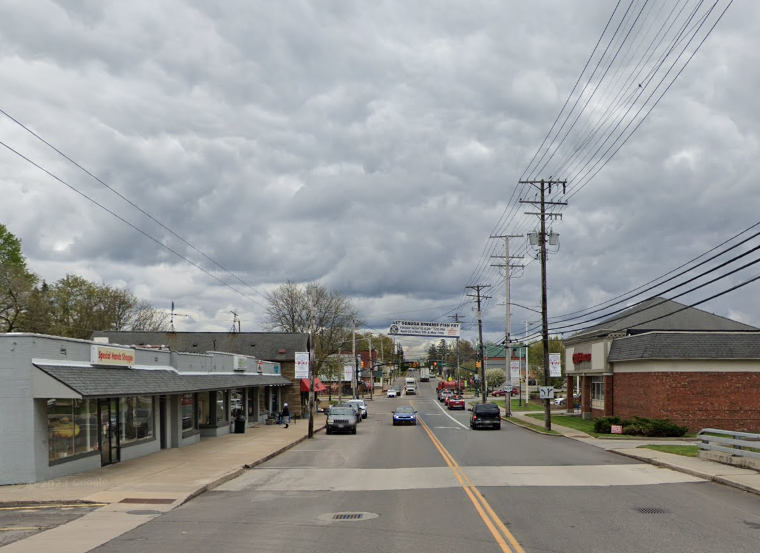
Why Middlefield Township Feels Secluded
- Moderate but Spread-Out Population
With around 4,000 residents across nearly 23 square miles, the township averages under 180 people per square mile—enough for a community presence but still very rural compared to city living. - No Major Urban Development
Aside from the nearby village of Middlefield, the township itself is farmland, homesteads, and quiet roads, with little dense or commercial development. - Agricultural Landscape
Fields, pastures, and woodlands dominate the terrain. The area’s open farmland and slow pace create a strong sense of separation from urban noise and activity.
What’s Special About Middlefield Township
- Amish Country Influence
Middlefield Township sits at the heart of one of the largest Amish communities in Ohio. Horse-drawn buggies, Amish farms, and markets are a defining part of local life. - Historic Settlement Roots
Established in the early 19th century, it was settled by pioneers who shaped the township with farms, mills, and churches that remain central to its character. - Unique Community Blend
The township combines Amish traditions with small-town American life, making it culturally distinct and unlike most Ohio townships. - Scenic Countryside
Its rolling farmland, rural charm, and visible Amish heritage make Middlefield Township stand out as both peaceful and historically rich.
Where is Middlefield Township?

Situated in southeastern Geauga County, Middlefield Township lies off the beaten path, accessible via State Routes 528 and 87. The township’s location within Ohio’s Amish country adds to its secluded ambiance, with horse-drawn buggies and quiet roads defining the area.
Getting there is a peaceful journey through rolling hills and farmland, which always makes me feel like I’m stepping back in time. The surrounding agricultural land acts as a natural barrier, maintaining the township’s privacy and serenity.
7. Hartsgrove: Quiet Countryside of Ashtabula County
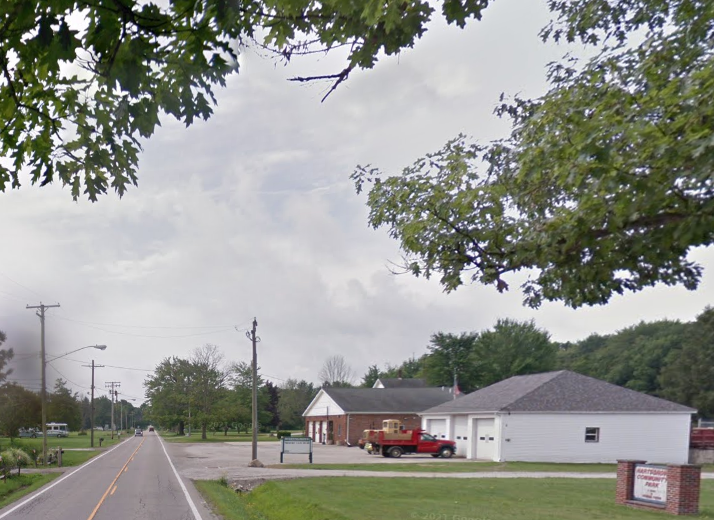
Why Hartsgrove Township Feels Secluded
- Very Low Population Density
With about 2,500 residents spread across nearly 25 square miles, Hartsgrove Township averages barely 100 people per square mile, giving it a quiet, rural atmosphere. - No Incorporated Towns
The township contains only the small unincorporated community of Hartsgrove. Without larger towns or villages, it remains largely agricultural and open. - Countryside Character
The land is dominated by farms, woodlands, and fields, with few businesses or busy roads, making it feel far removed from urban life.
What’s Special About Hartsgrove Township
- Pioneer Heritage
Founded in the early 1800s, Hartsgrove was settled by families who established farms, churches, and schools that still define the area’s small-community roots. - Unique Name and Identity
Named for Richard Hart, an early landowner, the township has a distinct name not commonly found elsewhere in Ohio. - Tight-Knit Rural Community
Most residents are homeowners, with families that have lived in the area for generations, fostering a stable and neighborly atmosphere. - Scenic Tranquility
Its wide farmland views, quiet country roads, and simple pace of life make Hartsgrove a classic example of peaceful rural Ohio living.
Where is Hartsgrove?

Located in the southwestern part of Ashtabula County, Hartsgrove is accessible via State Route 534 but remains off major travel routes. The township’s remote location, surrounded by forests and farmlands, gives it an isolated feel that’s hard to find elsewhere.
The journey to Hartsgrove takes you through scenic rural Ohio, which I always find rejuvenating. The absence of nearby cities and the minimal traffic contribute to the peaceful atmosphere that defines this hidden gem.
6. Chatham: Secluded Serenity in Medina County
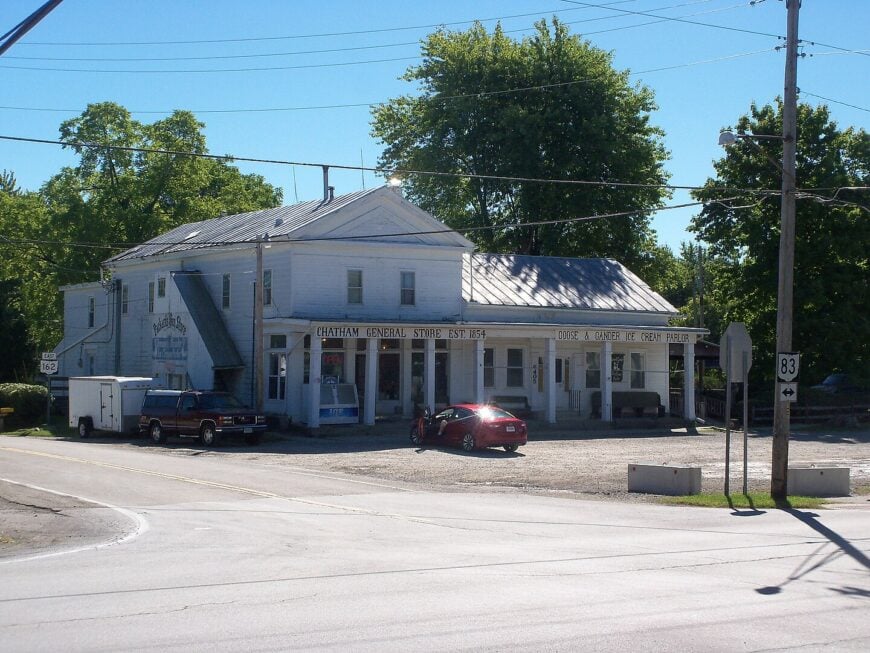
Why Chatham Township Feels Secluded
- Small Population
With fewer than 2,500 residents spread across about 26 square miles, Chatham Township averages under 100 people per square mile, making it sparsely settled. - No Incorporated Towns
The township has no incorporated municipalities—only the small unincorporated community of Chatham at its center—so development remains minimal. - Rural Setting
The landscape is dominated by farmland, fields, and wooded tracts, with few commercial areas or busy roads, which keeps it quiet and out of the way.
What’s Special About Chatham Township
Pastoral Beauty
With its mix of farmland, woodlands, and gently rolling terrain, Chatham Township offers a peaceful countryside lifestyle steeped in tradition.
Early Settlement Roots
Established in the early 1800s, Chatham Township was built by pioneer families who cleared land for farms and created the churches and schools that anchored the community.
Unique Name
It carries the name “Chatham” after Chatham, Connecticut, where some of its early settlers originated, tying it to New England heritage.
Stable Rural Character
Most residents are long-term homeowners, and the community retains a close-knit, small-town atmosphere.
Where is Chatham?
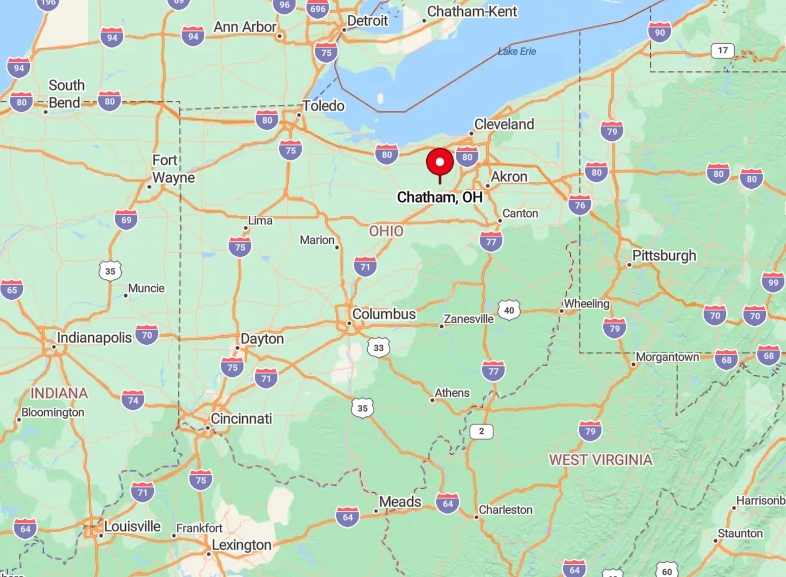
Situated in southwestern Medina County, Chatham Township can be found along State Route 83. Its location away from major cities like Cleveland and Akron enhances its secluded nature.
The township is surrounded by other rural communities and vast farmlands, which I find contributes to its quiet atmosphere. Reaching Chatham involves a pleasant drive through the countryside, free from the congestion of urban traffic.
The surrounding natural environment makes it an ideal spot for those looking to retreat into a serene setting.
5. Windsor: Nature’s Haven in Ashtabula County
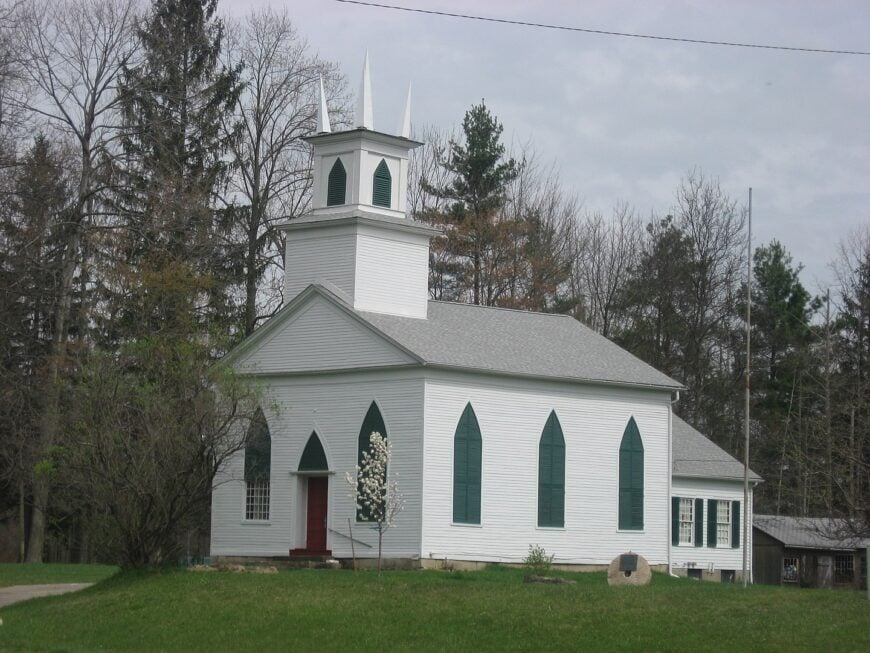
Why Windsor Township Feels Secluded
- Low Population Density
With about 2,200 residents spread over more than 25 square miles, Windsor Township has under 90 people per square mile, giving it a wide-open rural feel. - No Incorporated Towns
There are no cities or villages within the township, only the small unincorporated community of Windsor, which keeps development light and scattered. - Rural Landscape
The township is largely farmland, pastures, and woodlands, with few businesses or major roads, which emphasizes its quiet and remote atmosphere.
What’s Special About Windsor Township
Scenic Countryside
Rolling farmland, quiet wooded tracts, and open fields make Windsor Township a classic example of peaceful Ohio countryside living.
Pioneer Heritage
First settled in the early 1800s, Windsor was shaped by families who established farms, churches, and schools that remain central to its rural identity.
New England Roots
The township was named after Windsor, Connecticut, reflecting the heritage of its earliest settlers who brought New England traditions westward.
Community Stability
Most residents are homeowners with deep family ties to the land, making the township a stable, tight-knit place.
Where is Windsor?
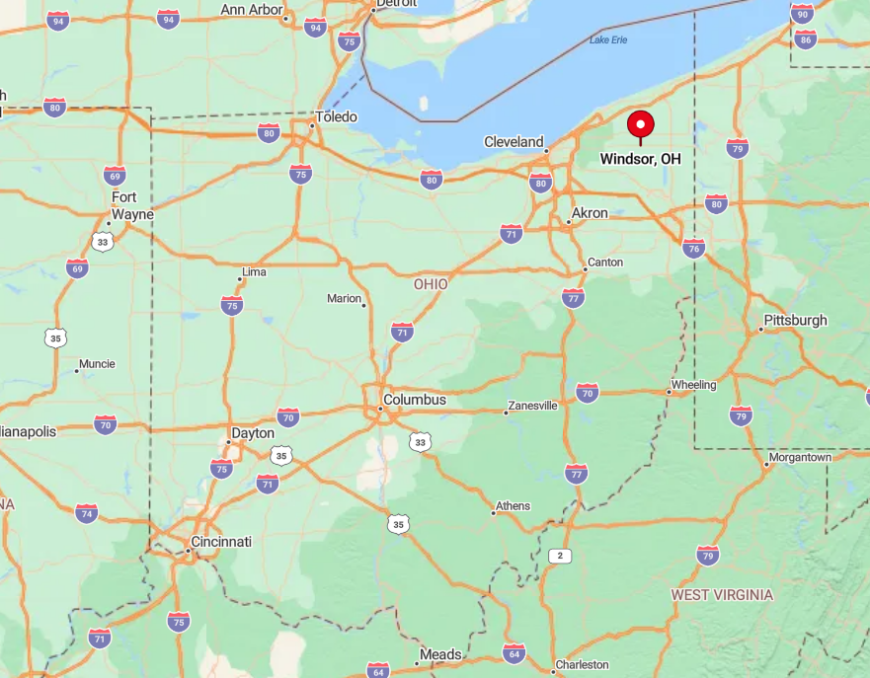
Located in the southern part of Ashtabula County, Windsor Township is accessible via U.S. Route 322 but maintains a sense of isolation. The township is bordered by extensive woodlands and open fields, which I find create a natural barrier from the hustle and bustle of larger towns.
Traveling to Windsor involves meandering through quiet country roads, adding to the feeling of retreating into nature. Its distance from major highways ensures that it’s a place where you can truly disconnect and unwind.
4. Kidron: Hidden Gem of Wayne County

Why Kidron Feels Secluded
- Small Population
Kidron is an unincorporated community with only a few hundred residents, making it far smaller than most Ohio towns. Its small size keeps it quiet and low-profile. - No Urban Development
There are no incorporated municipalities, business districts, or major highways cutting through. Life is built around scattered homes, farms, and small shops. - Countryside Setting
Surrounded by farmland and open space in Wayne County, Kidron feels removed from busy city life and maintains a tranquil rural character.
What’s Special About Kidron
- Amish and Mennonite Heritage
Kidron is well known for its Amish and Mennonite community, where horse-drawn buggies, traditional farms, and simple living are still part of daily life. - Historic Roots
Established in the 1800s, it has long been a center of Swiss Mennonite settlement, with deep cultural traditions that continue today. - Kidron Auction and Businesses
The weekly Kidron Auction is a major gathering spot where livestock, produce, and goods are sold. Lehman’s Hardware, a world-famous store specializing in non-electric tools and equipment, also anchors the community. - Unique Rural Identity
Kidron blends a close-knit, traditional lifestyle with cultural richness, making it unlike most small towns in Ohio.
Where is Kidron?
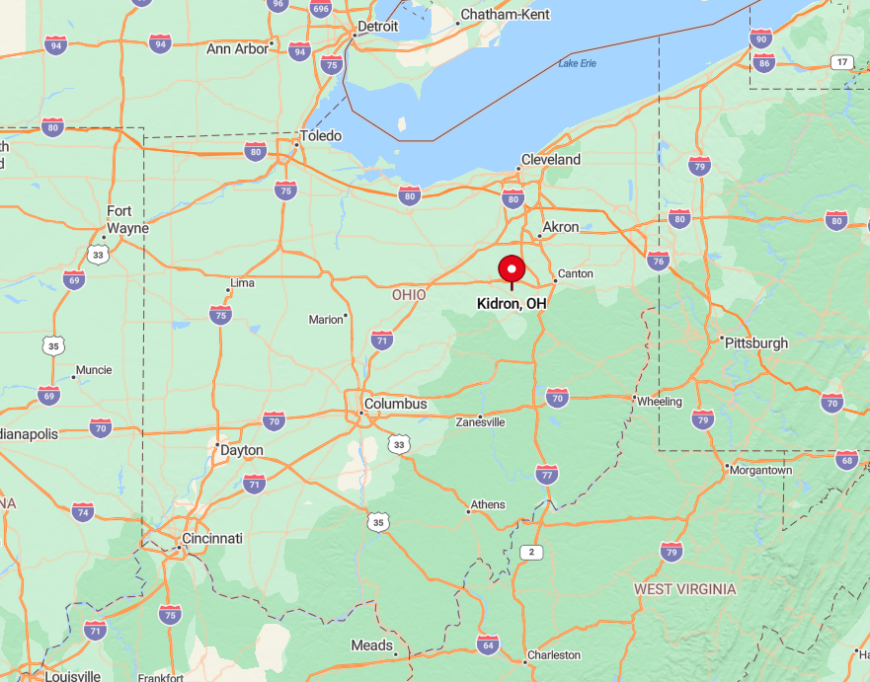
Nestled in Wayne County, Kidron is located near State Route 30 but remains tucked away from heavy traffic and city centers. The town’s position amidst rolling farmland and rural landscapes enhances its secluded feel.
When I visit, I take the less-traveled backroads that wind through picturesque countryside. Kidron’s distance from major highways and urban areas makes it an ideal spot for those seeking a quiet retreat steeped in tradition and simplicity.
3. Berlin Center: Countryside Calm in Mahoning County
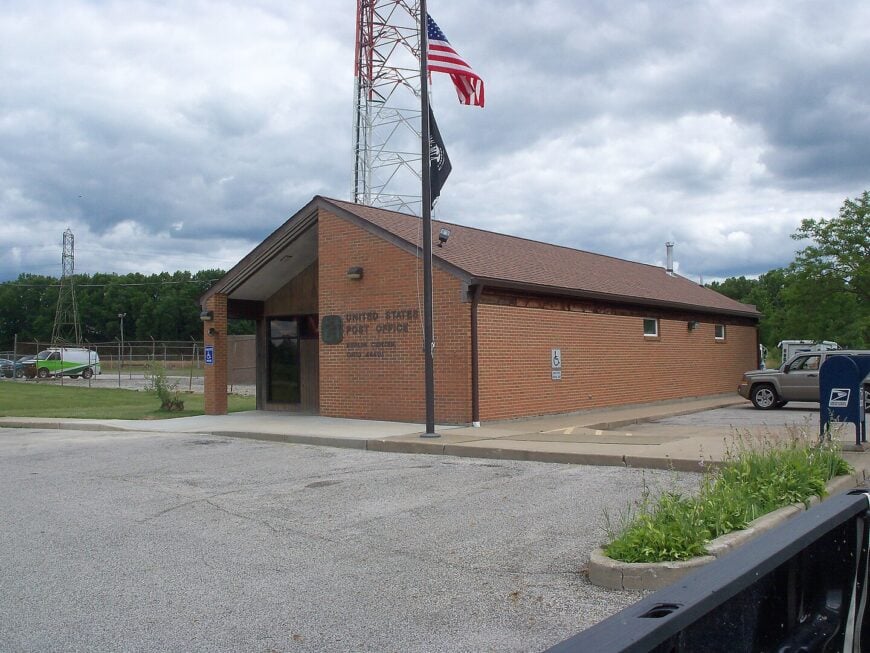
Why Berlin Center Feels Secluded
- Small Population
Berlin Center is an unincorporated community with only a few hundred residents, giving it a quiet, small-scale feel compared to incorporated towns. - No Urban Density
With no incorporated municipalities, the area is made up of scattered homes, farmland, and rural crossroads, rather than concentrated neighborhoods. - Countryside Surroundings
Located in Mahoning County, it’s surrounded by open farmland, small lakes, and wooded areas, which create a peaceful, tucked-away atmosphere.
What’s Special About Berlin Center
Blend of Quiet and Recreation
The community balances the tranquility of farmland with access to outdoor activities at Lake Milton, making it both peaceful and uniquely appealing.
Lake Milton Connection
Just north of Berlin Center lies Lake Milton, a popular spot for boating, fishing, and recreation, giving the community a scenic advantage while keeping its rural charm.
Historic Roots
The area was settled in the early 1800s and retains its pioneer character, with farms and churches still anchoring local life.
Tight-Knit Community
Despite being small, Berlin Center hosts local events and has a strong sense of identity, with families often rooted in the area for generations.
Where is Berlin Center?
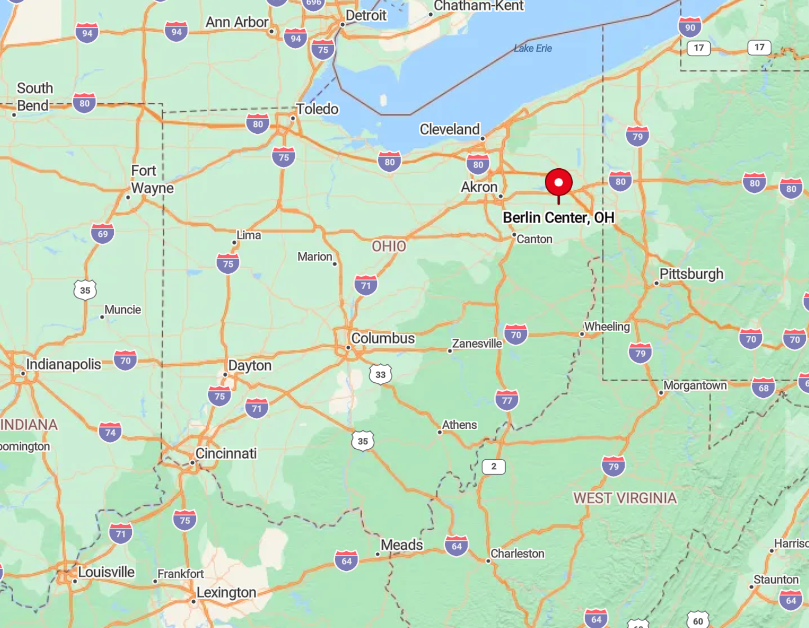
Located in Mahoning County, Berlin Center is accessible via State Route 224 but remains distant from major urban areas like Youngstown. The town’s proximity to Berlin Lake adds to its appeal while also acting as a natural barrier.
Getting there involves a leisurely drive through scenic routes that showcase Ohio’s natural beauty. The lack of nearby cities and the surrounding farmland make Berlin Center a tranquil destination away from the crowds.
2. Huntsburg: Rural Retreat in Geauga County
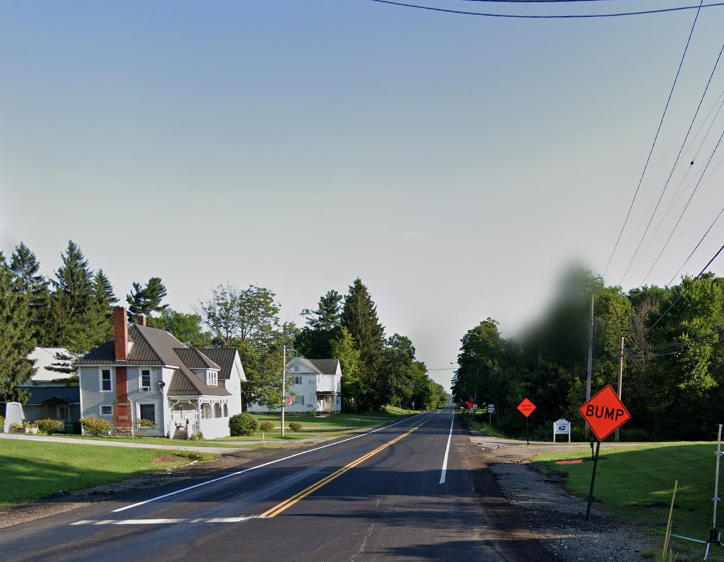
Why Huntsburg Township Feels Secluded
- Small Population Spread Out
Huntsburg Township has around 3,600 residents living across nearly 25 square miles, which works out to roughly 140 people per square mile—low enough to feel open and rural. - No Incorporated Towns
There are no cities or villages within the township, only the small unincorporated community of Huntsburg itself, leaving the rest as farmland and homesteads. - Rural Countryside
The area is dominated by farmland, woods, and quiet roads. With no major highways or dense business centers, it maintains a calm and removed atmosphere.
What’s Special About Huntsburg Township
Scenic Rural Charm
Its mix of Amish farmland, rolling fields, and woodlands makes Huntsburg a quintessential example of quiet Ohio countryside living.
Amish Community Presence
Huntsburg is home to one of Ohio’s large Amish populations, whose farms, buggies, and markets remain a defining part of daily life.
Historic Roots
Settled in the early 1800s, Huntsburg was named after Dr. Eben Hunt, one of its first landowners, giving it a unique pioneer identity.
Stable, Family-Oriented Community
Most residents own their homes and have deep roots in the township, creating a stable and tight-knit community.
Where is Huntsburg?

Situated in eastern Geauga County, Huntsburg is accessible via U.S. Route 322 but remains well off the beaten path. The township is surrounded by other rural communities and natural landscapes that enhance its secluded ambiance.
Traveling to Huntsburg involves passing through charming countryside, which I always find refreshing. The area’s distance from major highways and urban centers ensures a peaceful environment free from the noise and stress of city life.
1. Mesopotamia: Timeless Tranquility in Trumbull County

Why Mesopotamia Township Feels Secluded
- Very Low Population Density
With only about 3,300 residents spread over 27 square miles, Mesopotamia averages a little over 120 people per square mile, which keeps it quiet and open. - No Incorporated Villages
The township has no towns or cities—just the small unincorporated community of Mesopotamia centered around the historic commons—so development is light and scattered. - Remote, Countryside Setting
Surrounded by farmland and woodlands in Trumbull County, the township is off the main highway routes, giving it an extra sense of seclusion.
What’s Special About Mesopotamia Township
Scenic and Distinctive Character
Mesopotamia combines pioneer heritage, Amish culture, and preserved historic architecture, giving it a character unlike most rural Ohio townships.
Historic Commons
At the heart of the community is Mesopotamia Commons, a village green surrounded by 19th-century buildings and churches, listed on the National Register of Historic Places.
Amish Country Identity
The township is part of a large Amish settlement, with farms, buggies, and traditional markets adding a unique cultural layer to its rural life.
Deep Pioneer Roots
Settled in the early 1800s, its historic structures and churches still anchor the community, making it one of the most intact examples of early Ohio settlement.
Where is Mesopotamia?
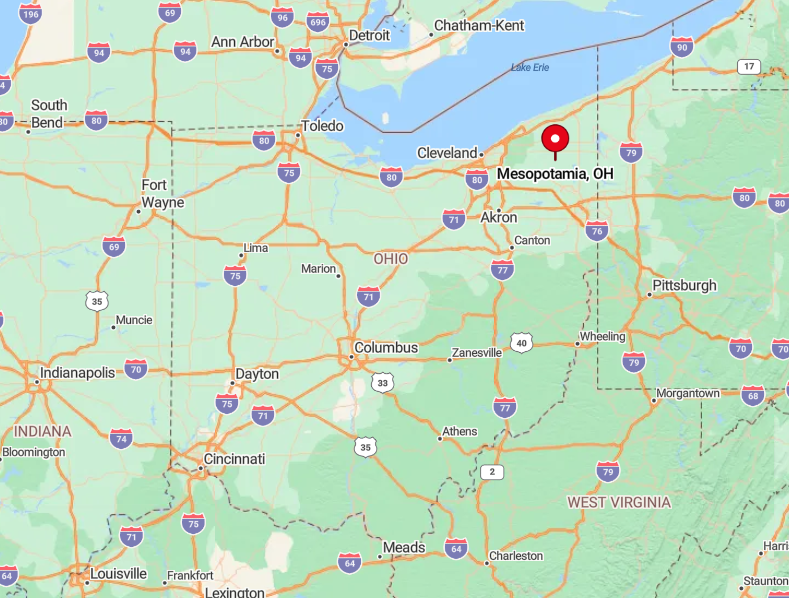
Located in northern Trumbull County, Mesopotamia sits at the intersection of State Routes 87 and 534 but remains far from major urban areas. The township’s remote location and surrounding farmland contribute to its secluded feel.
Getting there involves a scenic drive through rolling hills and picturesque countryside, which I find adds to the sense of escape. The absence of nearby cities and the emphasis on preserving natural and cultural heritage make Mesopotamia a peaceful retreat away from modern distractions.



